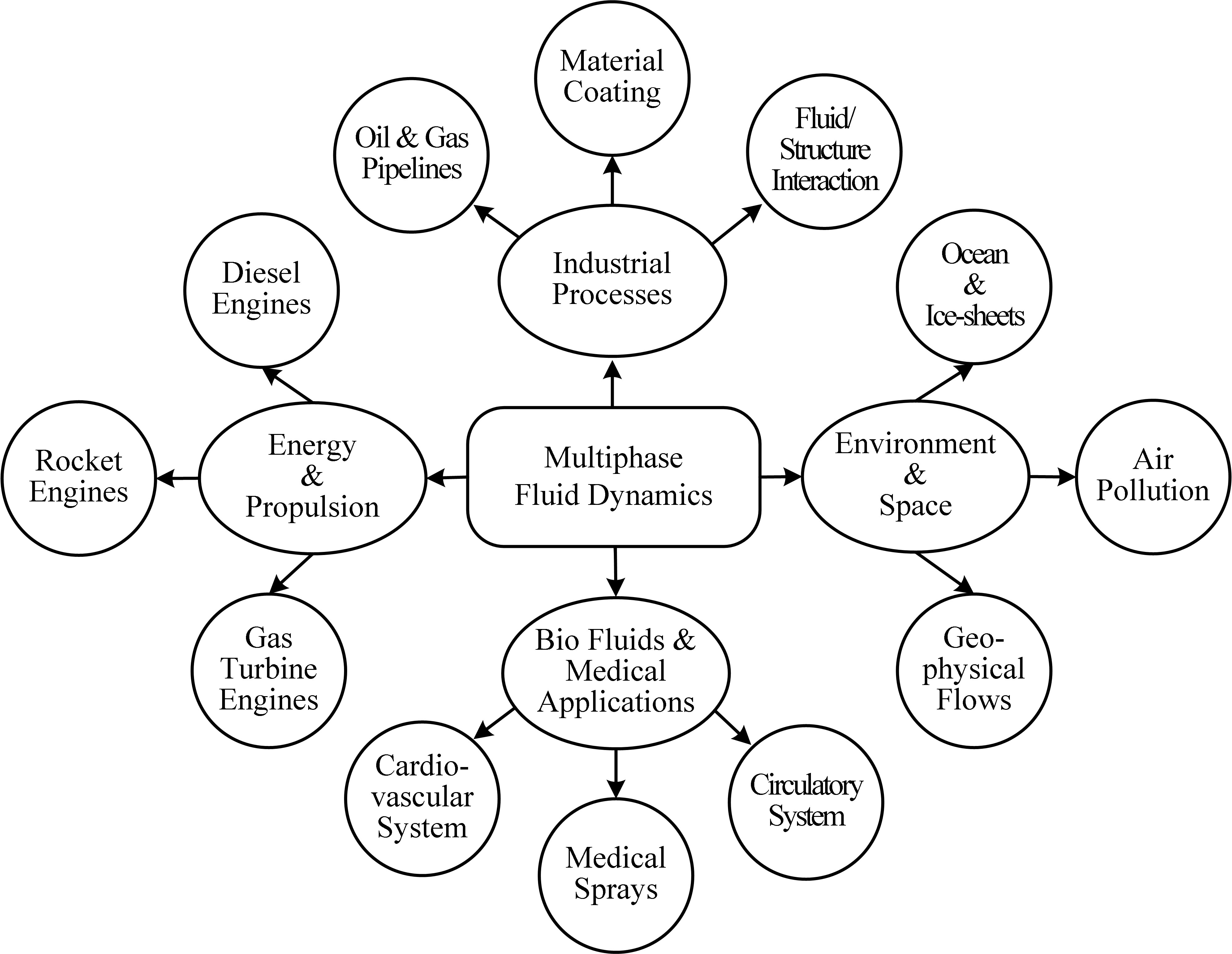
About
About the lab and the PI, click to read more.
One of the major thrusts in our research group is investigating the fundamental behaviors of liqiud atomization. This process is especially important in liquid-fueled propulsion systems, such as, diesel, gas-turbine and rocket engines. In these devices, the system performance is conditioned by the fuel and oxidizer droplet size distributions, which are usually the rate-controlling processes. Evaporation of fuel (and oxidizer) and the ensuing combustion are accelerated if the droplet size is smaller -- any process leading to a reduction in drop size is of prime importance in combustor design. Thus, immediately after the liquid fuel is injected into the combustion chamber, the liquid stream must be disintegrated into droplets. Many techniques, such as swirling, jet impingement, air-blast atomization, and liquid jet in crossflow are used for this purpose in contemporary liquid-fueled combustion devices. We study these processes to identify fundamental physics of primary and secondary atomization phenomena.
Please right click on the video, choose show controls, and click the play button to play the videos.| Liquid Jet in Crossflow | Adaptive Mesh Refinement |
| Liquid Jet Injection | Pulsed (20 Hz) Liquid Jet Injection |
| Impinging Liquid Jets: We = 27.5 | Impinging Liquid Jets: We = 440 |
| Oscillatory Breakup of Liquid Droplets | Bag Breakup of Liquid Droplets |

About the lab and the PI, click to read more.

High-fidelity simulations of primary and secondary atomization of liquid fuels. Click here to read more..

Spatiotemporal prediction of non-reacting and reacting multiphase flows using machine learning. Click here to read more.

Decomposition and ignition of liquid fuels. Click here to read more.

Combustion dynamics of reacting gaseous and liquid fuels. Click here to read more.

Read our publications here.

Click here to read more about the high-performance computing software and hardware facilities.

Click here to read about recent events in the group

Main page for the ONR program. Click here to read more.

Click here to locate us on the map and other contact information.